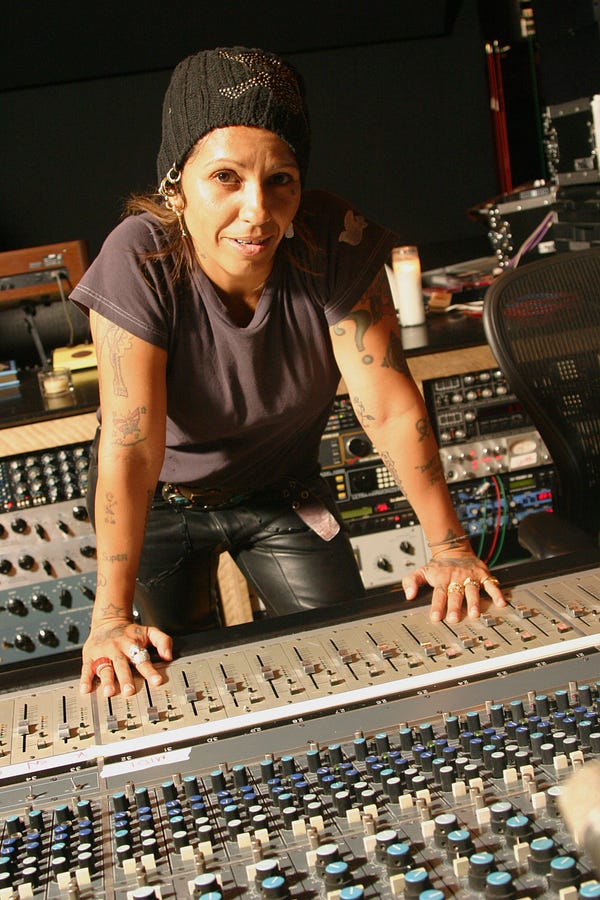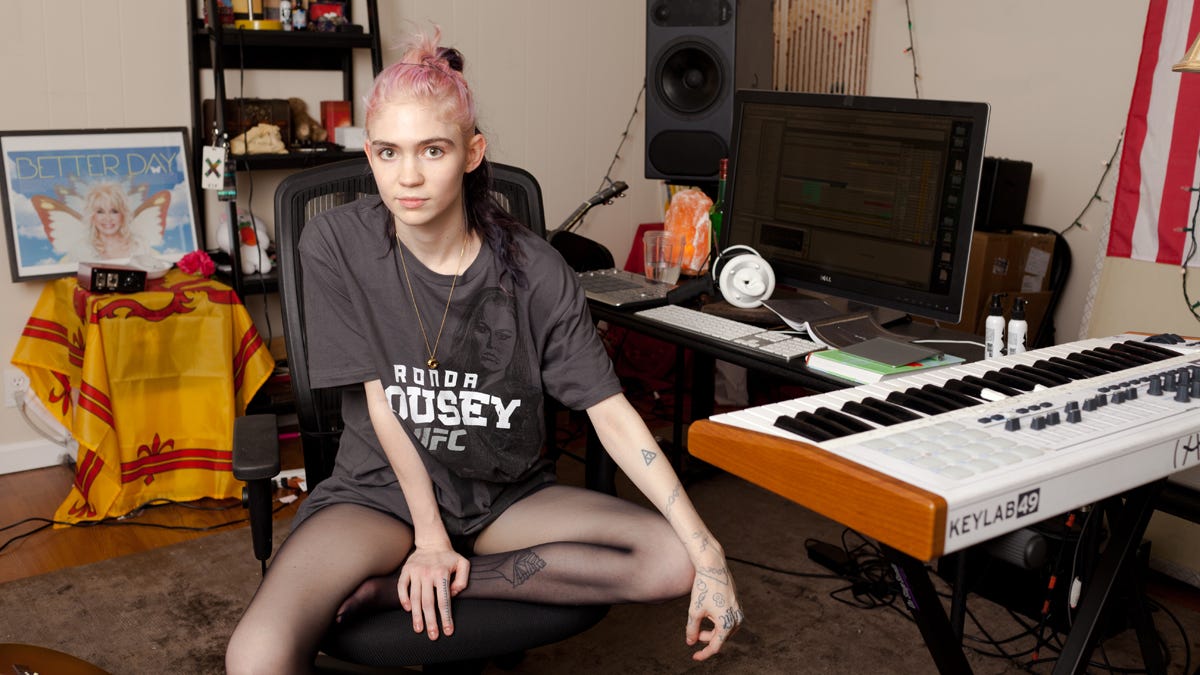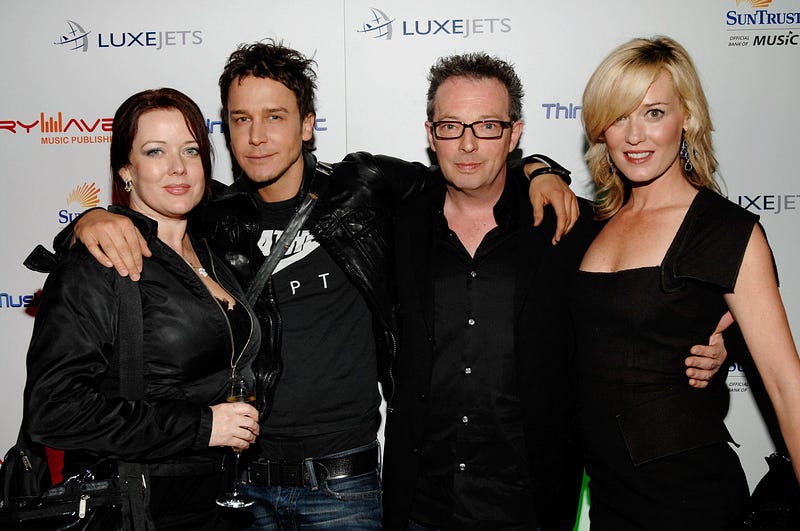Where Are The Female Music Producers?
While chart-topping superstars like Taylor Swift and Beyonce may make it seem as though women dominate the music industry it is, unfortunately, a very different story behind the mixing board, where female producers and engineers are overlooked with distressing frequency.
_______________________________________
Guest Post by Kat George on Medium
Since 1974, only six women have been nominated for Producer of the Year. How might we inspire more females to explore music making?
It would be easy to mistake the music industry as anything other than a man’s world. Indeed, the sheer domination of artists like Beyoncé, Adele, Taylor Swift, Nicki Minaj, Katy Perry, and Miley Cyrus—not only on the charts but in the news cycle—is nothing to sneeze at. The front-facing side of the music business finally looks like a place where women can not only thrive, but also lead and, possibly, earn as much (and sometimes more!) than their male counterparts.
Based on the prevalence of female chart-topping superstars, you’d think that the music industry — traditionally the domain of men — is increasingly being shaped by powerful women. But behind the scenes it’s a different story.Female producers, mixers, engineers, designers, and editors are few and far between, and the ones who do exist are consistently overlooked and discounted.
In this year’s GRAMMY Awards, no female producer has made the cut for a Producer of the Year, Non-Classical nomination. That, unfortunately, is nothing new. Since it was introduced in 1974, only six women have been nominated in the category. Past female nominees include Janet Jackson (the first female nominee ever, in 1989, who was nominated with her team Jimmy Jam and Terry Lewis for her album Janet Jackson’s Rhythm Nation 1814), Mariah Carey (nominated as a pair with Walter Afanasieff for her album Emotions in 1991), Paula Cole (the first woman to be nominated solo, for her album This Fire in 1997), Sheryl Crow (for her album The Globe Sessions in 1998), Lauryn Hill (for her album The Miseducation of Lauryn Hill in 1998), and Lauren Christy (as one half of the production team The Matrix, for their work with Liz Phair and Hilary Duff in 2003).

Janet Jackson, the first female Producer Of The Year nominee
Notably, under the highly esteemed Producer Of The Year, Non-Classical category, it wasn’t until 2003 that a woman was nominated for her work with another artist. Indeed, the first five nominees are best known as performers, and all were nominated for working on their own albums. Meanwhile, only three of the six women received solo nominations, while the other three were nominated as part of a collaborative team with one or more male producers. Not one of the six nominations has resulted in a female Producer of the Year, Non-Classical award winner, which is the most prestigious of production awards.
This doesn’t mean that female producers aren’t creating quality work. Far from reflecting the quality of female-produced music, these stats reflect the greater propensity of women in music to lean into performance rather than production. But why is that?

Producer Linda Perry was inducted into the Songwriters Hall of Fame
We’ve seen several brilliant female producers. Linda Perry produced worldwide hits for Pink (“Get the Party Started”) and Christina Aguilera (“Beautiful”) and has worked with countless other top 10 artists. Sylvia Robinson, now sadly deceased, is credited as the “God Mother” of hip-hop, having taken the genre mainstream with her work producing Sugar Hill Gang’s “Rapper’s Delight.” Kara DioGuardi produced hits for Kelly Clarkson and Britney Spears, amongst others. Sylvia Massy produced Tool’s Undertow, and worked as an engineer for the Red Hot Chili Peppers and Johnny Cash. Clearly, there are impressive role models for female producers.
So why are women still so notably absent from music production? Massy, speaking to LA Weekly, blames the work environment. “A career in music production means a lot of 14 hour days in a dark studio with little outside contact. Women can find it hard to meet new people in that type of environment, and most eventually gravitate into fields that allow them to grow socially,” she said. Indeed, the prospect of being shut away from society in a dark room, hunched over a mixing deck for days and weeks on end doesn’t exactly seem like an enticing prospect for anyone, regardless of gender.
Her comment also belies the truth of the boy’s club that is music production. Given that less than 5% of music producers and engineers are female, there isn’t much room for social growth for women in the industry, going hand in hand with an equally limiting professional growth trajectory wherein men traditionally work with, answer to, and promote other men. KK Proffitt, owner and chief engineer at JamSync, a small studio in Nashville, says the imbalanced gender dichotomy can be intimidating for women, especially when it gives men carte blanche to act unprofessionally.
Emily Lazar, the first female producer to be nominated in the Record Of The Year category (for her engineering work on the Foo Fighters’ Wasting Light in 2012) is also the second female producer to ever be nominated in the category in 2016, this time for Sia’s “Chandelier.” Despite her now-recognized talent, Lazar says she felt the discouraging effect of the boy’s club even as a young woman looking to buy her first electric guitar. She spoke to Billboard recently, recalling the male staff at the audio store being flummoxed that she, a woman, was interested in buying the instrument.
Lazar says, “I walked out of the store because I was so intimidated, as silly as that sounds, and I had never felt that way about anything in my life. Flash forward a few years to my own career: I went into an audiophile stereo type of store to buy some speakers, converters, equipment for the studio for listening. Again I walked in and approached these guys, and they were like, ‘You’ve gotta be shopping for someone, like your boyfriend, your husband.’ I was like, ‘No, I’m an engineer, I’m shopping for my studio.’ They’re looking at me like I’m insane.’”

Grimes took control of her music by learning and undertaking every step of the production process [photo: Music Radar]
That attitude, and the blatant way in which it manifests itself in the music industry, might just be what’s keeping women away from the console.Billboard notes in Lazar’s interview that consumer studies reveal that “94% of people [who] buy high-fidelity audio equipment are men.” Lazar believes that this is due to a gender stereotyping that occurs early in children’s lives, shaping what their interests and skills should be. “Unfortunately most women are not trained to be — I don’t want to say trained — but they’re not in an environment that’s conducive to exploring that stuff,” she says.
For Lazar, the quest for perfection was what motivated her to go up against a patriarchal industry and teach herself the art of sound engineering. Performer, writer, and producer Grimes went down a similar path, producing all her own music, after coming up against industry sexism. In an interview with Fader, she recounts how she had been infantilized by male producers who instantly doubted her chops. “Going into studios, there’s all these engineers there, and they don’t let you touch the equipment. I was like, ‘Well, can I just edit my vocals?’ And they’d be like ‘No, just tell us what to do, and we’ll do it.’ And then a male producer would come in, and he’d be allowed to do it. It was so sexist. I was, like, aghast.” Like Lazar, Grimes decided to take control of her music by learning and undertaking every step of production herself.
So when we talk about women and music production in particular, it’s very much a chicken and egg situation: Women are deterred from entering production because it’s a man’s world, and so we have less female producers than we should, and this reflects in the awards.
Nick Messitte wrote in Forbes that winning a GRAMMY, for a producer, is a license to be more creative, and push boundaries. He says, “The pattern seems to be clear: with more clout comes more opportunity for riskier endeavors.” The more we reward men for their production (as we should, when it’s merited), the more we perpetuate the boy’s club. It’s a cycle, because when men are constantly coming out on top, they simply broaden their sphere of influence. Which is why it’s so important for female producers to start getting in the game.

Lauren Christy, David Jost, Graham Edwards and Meagan Phistan at a pre-Grammy event
I grew up in the 1970s and was on the record production track. Did a few indie productions that are still well thought of today… on a limited scale! 😉 Jumped the hoops, ticked the boxes: AES member, NARAS member, blahdy blah. I was blessed to have some truly fantastic mentors, including/especially the late Bob Moog and the incredible, amazing, underrated Jimmy Miller (Stones, Traffic). But for every kind, generous, enthusiastic, supportive mentor there were 50 sexist @$$holes. Record execs who, when introduced to me as a female producer, looked me up and down and with rolling eyes sighed “They USED to be publicists.” With all due respect to Massy, it wasn’t the physical environment that drove me out of the industry. I LOOOOVED the studio. LOVED it. It was like entering a cocoon where you checked life’s problems at the door to be at your most effective. What really drove me out of the industry was being at some function with a bunch of “they USED to be publicists” type guys and deciding that I simply DID NOT WISH TO SPEND THE REST OF MY LIFE DEALING WITH WALL TO WALL @$$HOLES when there were countless other options available. I saw my future: to quote John Cale, “what endlessness ahead”. And I did not like it. I didn’t care to spend the rest of my life in a toxic working environment being put down for being competent, whereas in other industries one’s competence is appreciated, expected, valued and credited. So I bailed. This may seem like cowardice to you, and if it does, that’s fine, you do you. But on a day to day basis it ground me down to the point where a production career, while achievable, simply didn’t seem to ME to be the best use of my time & talents. The misery was simply never going to let up, not ever. Life’s too short for that. I’m way better off psychologically and emotionally being OUT of the industry. Decades later I still feel I made the right decision.
I think there are some wonderful, talented women out there who are on the rise. I think of Casey Desmond, who, as the daughter of an engineer/studio owner, literally spent her childhood crawling on the floor among the consoles, wires and speakers. To her, it’s home ground. And with the support network she has of family & friends ALL in the industry, she’ll get there eventually if she wants it. But she has other strings to her bow as well, and it will be interesting to see if she elects to move on to another of her core competence areas like videography or fashion design. I wouldn’t blame her if she did, and I will totally understand. Why spend the rest of your life getting the metaphorical cr*p kicked out of you on a daily basis if YOU DON’T HAVE TO. Either choice will be equally life affirming.
Not much evidence given to prove that there is actually discrimination against women in these fields. At least some of the differential must be self-selection. Even the article admits that maybe women are not interested in doing what it takes – long hours alone in a dark room with a mixing desk. I actually enjoy those long hours of working alone.
As for this: “It means putting meritorious emphasis on skill (the way we do for boys), rather than on being seen and admired.”
Fair enough. Then let’s ask for the same for female performers as well, emphasis on skill rather than appearance. Of course, there are plenty of musically talented female performers, but there are too many who get by on looks and sex-marketing instead of musicality. Let’s change that.
“long hours alone in a dark room with a mixing desk. ”
We don’t see many women either working in mines. Does it mean that it is because if sexism, or simply because women are less interested in working long hours digging charcoal in the dark subterraneans ?
I think it’s a combination of both : environment and natural bias. Even in a hypothetically 100% neutral environment, we will still see a majority ( maybe not huge, 60% ? ) of both sexes naturally gravitating as a flock towards some areas rather than others. And that’s ok. As long as one is able to do what he/she likes without prejudice, I don’t see what’s the big deal if things are not split out in a mathematically precise 50/50.